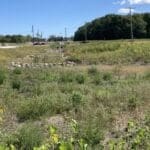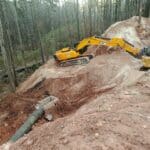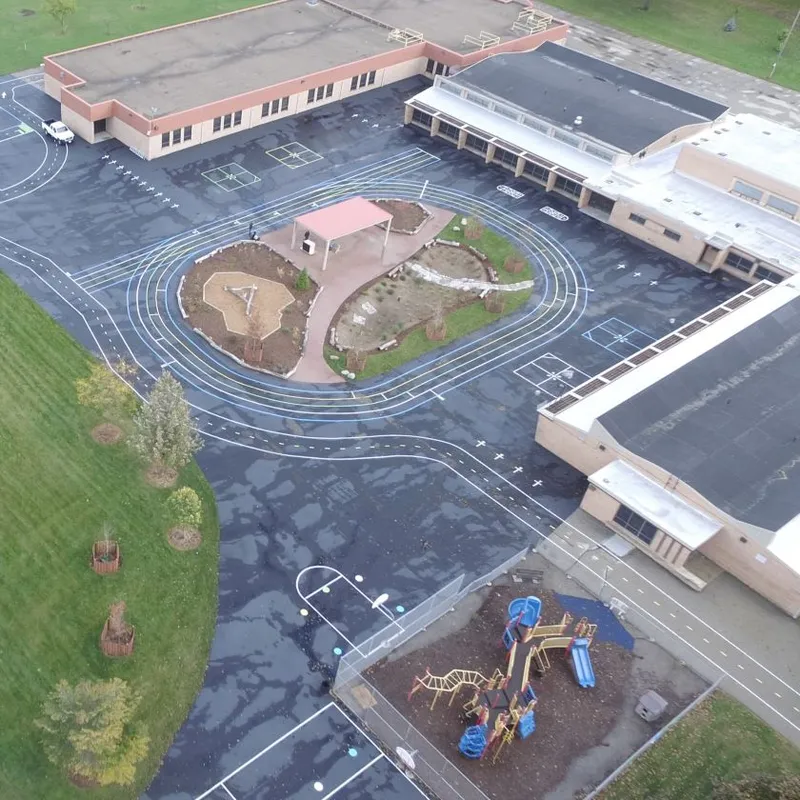Stormwater Credits Guide: Everything You Need to Know
Stormwater Credits: What They Are
Definition of Stormwater Credits
In essence, credits are financial incentives that allow builders and property owners to offset some of the cost of stormwater management by implementing best management practices (BMPs). BMPs reduce the environmental impact of stormwater by reducing runoff and pollutants. Somebody can then trade earned credits with stormwater facility credit, which allows property owners to save revenue while implementing sustainable practices.
How Stormwater Credits Work
The way that stormwater fee credits work is quite straightforward—when a property owner or builder installs green infrastructure—stormwater management such as green roofs, rain gardens, permeable pavements and more—they earn credits. These credits can then be applied to reduce stormwater utility fees that are set by local jurisdictions. When a company invests in green infrastructure, it is making a long-term investment toward its fees while being eco-friendly.
Benefits of Stormwater Credits
There are many benefits for stormwater credit trading, such as
- Financial benefits: implementing green infrastructure helps with local stormwater systems fees, but it also raises the value of the property by reducing flooding risk and enhancing the aesthetics.
- Regulatory benefits: Being involved in a credit system means that companies are familiar with the newest regulatory practices, thus eradicating fines and reducing fees.
- Environmental benefits: Employing green infrastructure helps the environment by reducing runoff and pollution and promoting biodiversity.
Understanding Stormwater Credit Programs
What Is a Stormwater Credit Program?
A stormwater credit program is local to each region it serves, and many areas within the U.S. are beginning to implement such programs. Credits are typically based on certain BMPs.
Examples of Stormwater Credit Programs Across the U.S.
- Philadelphia: Philadelphia stormwater regulations offer credits through the Philadelphia Water Department (PWD). PWD credits are rewarded to properties that implement green infrastructure types.
- Ann Arbor: Ann Arbor residents are urged to use rain barrels and permeable surfaces in exchange for stormwater credits.
- Minneapolis: In Minneapolis and throughout Minnesota, builders are urged to develop green infrastructure for credit to meet regulatory requirements.
Applicability of Credits
Credits can be applied to either residential or commercial properties, making them an excellent choice for most building projects.
Types of Stormwater Credits
Open Space and Green Infrastructure
Infrastructures, such as bioswales and parks, naturally absorb stormwater. Often, credits are issued by preserving open spaces or adding this type of green infrastructure.
Impervious Area Reduction (IAR)
Impervious area reduction (IAR) credits involve projects that use permeable pavements or landscaping instead of non-permeable, troublesome surfaces, such as asphalt or concrete.
Managed Impervious Area (IA/GA)
Stormwater credits are also issued to manage existing impervious surfaces. An example would be retrofitting a parking lot with stormwater management systems.
NPDES Compliance Credits
NPDES credits are earned under the National Pollutant Discharge Elimination System (NPDES) and are awarded to sites that reduce pollutant discharges.
Stormwater Facility Credits
Stormwater facility credits are awarded for stormwater maintenance and construction of stormwater management system facilities that mitigate runoff, such as green roofs and retention basins.
Eligibility and Application for Stormwater Credits
Who Qualifies for Stormwater Credits?
Eligibility for credits may vary by jurisdiction; however, generally, they are awarded to property owners and developers who meet one or more of the criteria above.
How to Apply
Applying for credits also varies by locality, but it typically involves proof of BMP implementation and the payment of associated costs.
Calculating Stormwater Credits
Credits often follow a typical formula within the region and are calculated based on the type of BMPs implemented.
Inspection, Maintenance, and Renewal of Stormwater Credits
Stormwater Credit Compliance
To maintain earned credits, properties and infrastructure must be regularly inspected, maintained, and improved or repaired if needed. Credits can only be renewed if structures still meet regulatory requirements and pass stormwater inspections.
Common Challenges in Maintaining Credits
Depending on the type of structure implemented, maintenance can be challenging. Also, local regulations can and may change often, and property owners must be aware and compliant with the changes.
Residential Stormwater Credits
Residential stormwater credits are similar to commercial ones, except they are awarded to homeowners as an incentive to adopt BMPs on their property.
Examples of Residential Programs
Some regions have established homeowner credit programs, such as in Portland, Oregon. Homeowner can earn credits in Portland by installing rain gardens and other stormwater structures.
Stormwater Credit Trading Programs
What is Stormwater Credit Trading?
Some regions offer credit trading programs, where property owners can buy and sell credits within a regulated market. This provides cost-effectiveness and flexibility in the effort to achieve stormwater management goals.
Benefits of Credit Trading
The primary benefit of credit trading is the more efficient allocation of resources. One property owner can trade credits to another, and in essence, all bases are covered.
Examples of Credit Trading Systems
Credit trading systems are relatively new, however, some regions have pilot programs to test out credit trading systems. This can foster collaboration among property owners while achieving the main goal of managing stormwater effectively.
Challenges and Limitations of Stormwater Credits
Concerns for Property Owners and Communities
One concern surrounding credit trading is that it may be challenging for property owners to understand. Also, communities may be anxious about the equitable distribution of credits.
Is Your Community Ready for Stormwater Credits?
Before a credit trading program is initiated, a community should take a hard look at their readiness, while also ensuring local regulations and standards can be met with credit trading.
Overcoming Barriers to Implementation
Some barriers to credit trading implementation include bureaucracy, lack of awareness and funding challenges. These challenges should be assessed along with the community readiness before implementation.
Integrating Stormwater Credits Into Development
How to Use Credits in Local Development Plans
Builders can implement credits into local development by assessing potential BMPs that align with community goals and local regulations during the development phase.
Adapting Credits for Local Use
It’s wise to customize credit programs to align with community and local goals to enhance the effectiveness of stormwater management.
How Stormwater Compliance Solutions Can Help You with Stormwater Credits
Understanding how stormwater credits work is vital for builders and developers who want to meet stormwater management standards while practicing cost-effectiveness.
 Kenosha, Wis. Highway KR Regenerative Stormwater ConveyanceThe Root-Pike Watershed Initiative Network Kenosha County, and others worked with AQUALIS to design and implement an innovative solution for stormwater control along Highway KR.
Kenosha, Wis. Highway KR Regenerative Stormwater ConveyanceThe Root-Pike Watershed Initiative Network Kenosha County, and others worked with AQUALIS to design and implement an innovative solution for stormwater control along Highway KR. Durham, N.C. Sinkhole Leads to Stormwater System RehabilitationThe tenant on this property noticed a depression that opened to the ground below and notified the property owners.
Durham, N.C. Sinkhole Leads to Stormwater System RehabilitationThe tenant on this property noticed a depression that opened to the ground below and notified the property owners.

